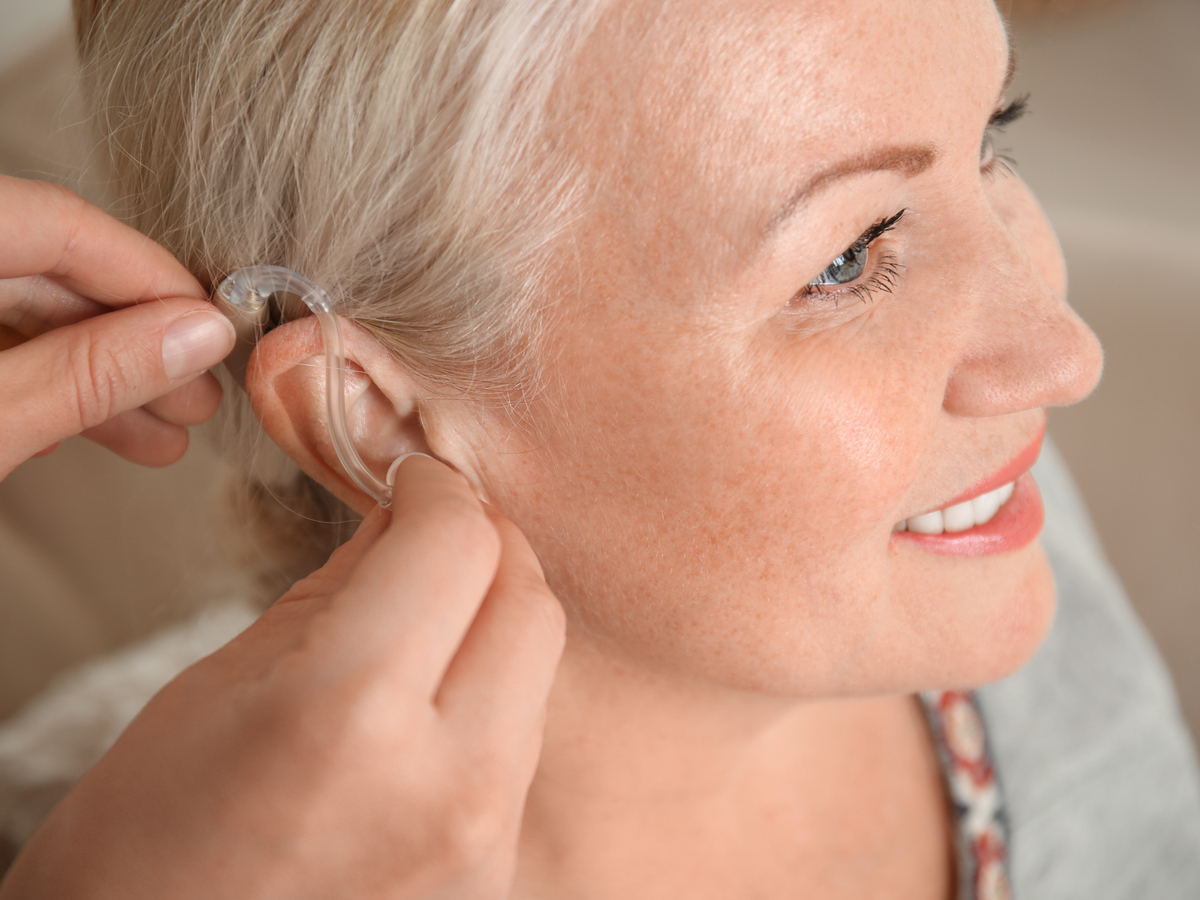
Our expert audiologist shares tips on how to pick the best hearing aid for you, including what types of devices are available, costs and lifestyle goals.
Losing some of your hearing as you get older is very common. In fact, 1-3 Americans between the ages of 65 and 74 experience age-related hearing loss, called presbycusis. In addition to age, changes in the inner ear, noise damage, medications and conditions like diabetes and high blood pressure can also contribute to hearing loss.
Yet, despite how common hearing loss is, only about 1-5 people who need a hearing aid actually wear one. Here Kristina Rousso, AuD, an audiologist at Keck Medicine of USC, shares what people should consider when looking for a hearing aid.
1. There are two key differences to consider when choosing a hearing aid.
Although hearing aids don’t restore normal hearing, they can help amplify sound and reduce competing background noise so you can better interact with the world around you, including hearing others when they talk, engaging in group activities, watching television and improving sound awareness for safety.
According to Dr. Rousso, there are many different types of hearing aids, but there are two differences to consider: daily-wear and extended-wear hearing aids.
- Daily-wear hearing aids. This type of hearing aid can be taken in and out of the ear by the user. In most cases, you would put the hearing aid in at the start of the day and remove it when you go to bed. Daily-wear hearing aids can be used during most activities and are water resistant; however, they should be removed while showering or swimming. Styles can range from behind-the-ear to in-the-ear models.
- Extended-wear hearing aids. This kind of hearing aid, which is not visible to others, is inserted into your ear by an audiologist. The device sits in close proximity to your eardrum and, as a result, can remain in the ear for a longer period of time without changing the battery — generally between one to three months. The device should be removed to swim but can be used while showering. About every eight weeks, you will need to visit your audiologist to replace the device.
2. Understanding your listening challenges is key.
Do you have trouble hearing things in certain situations? Knowing what your unique hearing challenges are can help your audiologist suggest which device might be the best hearing aid for you.
“Reflect on your most challenging listening situations — while alone, with your family and friends or in a work setting — and share this information with your audiologist,” says Dr. Rousso, who is also a clinical assistant professor of otolaryngology at the Keck School of Medicine of USC. “It’s important to work with a team that evaluates not just your hearing test but your hearing loss as a whole. This includes understanding your listening challenges, listening goals and lifestyle.”
3. A device that works for someone else may not work for you.
Selecting a hearing aid isn’t a one-size-fits-all process. A device that works for a friend may not be the right fit for you. Similarly, choosing a hearing aid because it’s expensive or advertised as high-tech does not guarantee that it will be the best choice for your needs and goals.
“Many patients ask for the hearing aid their neighbor has or one they saw in an advertisement, but it’s important to understand that each person’s hearing needs are unique. Even the hearing between your ears can be different,” Dr. Rousso explains.
These factors, along with others such as the size and shape of your ear canal, your budget and insurance coverage, can play a role in deciding which hearing aid is right for you.
“The best hearing aid is one that is selected by you and an audiologist,” Dr. Rousso says.
4. You can take a hearing aid on a test drive.
Although choosing a hearing aid can seem overwhelming, the good news is you’re not locked into your decision. “Hearing aids are an investment — and they come with a 45-business-day trial period,” Dr. Rousso explains.
Your trial period is a good time to reflect on the change in your listening abilities with your new hearing aid and assess whether the device will be convenient and easy enough for you to actually use. People with arthritis, for example, may find it difficult to use daily-wear devices and may prefer the lower maintenance of an extended-wear hearing aid.
Dr. Rousso recommends meeting with your audiologist two to three times during the trial period. These meetings will allow your audiologist to fine-tune your instrument to better meet your specific needs, increase your comfort level with the different features of your hearing aid and answer any of your questions.
She also advises following up with your audiologist six months after your hearing aid fitting to gauge the level of improvement in your listening abilities and quality of life. This six-month assessment provides an additional opportunity to make improvements in the function of your hearing aid.
5. Having a support person at your hearing appointment can help.
If you have an appointment with your audiologist to discuss the different types of hearing aids available, asking a family member or friend to accompany you may help.
“I encourage people to bring a support person so that they have a team to help on their hearing journey,” Dr. Rousso says.
As an extra set of listening ears, your companion can help you keep track of all the information you receive.
Dr. Rousso also encourages patients to reach out to their audiologist with any questions or concerns they may have regarding their hearing aids.
“We are always happy to serve as a guide and resource for you.”
Topics
